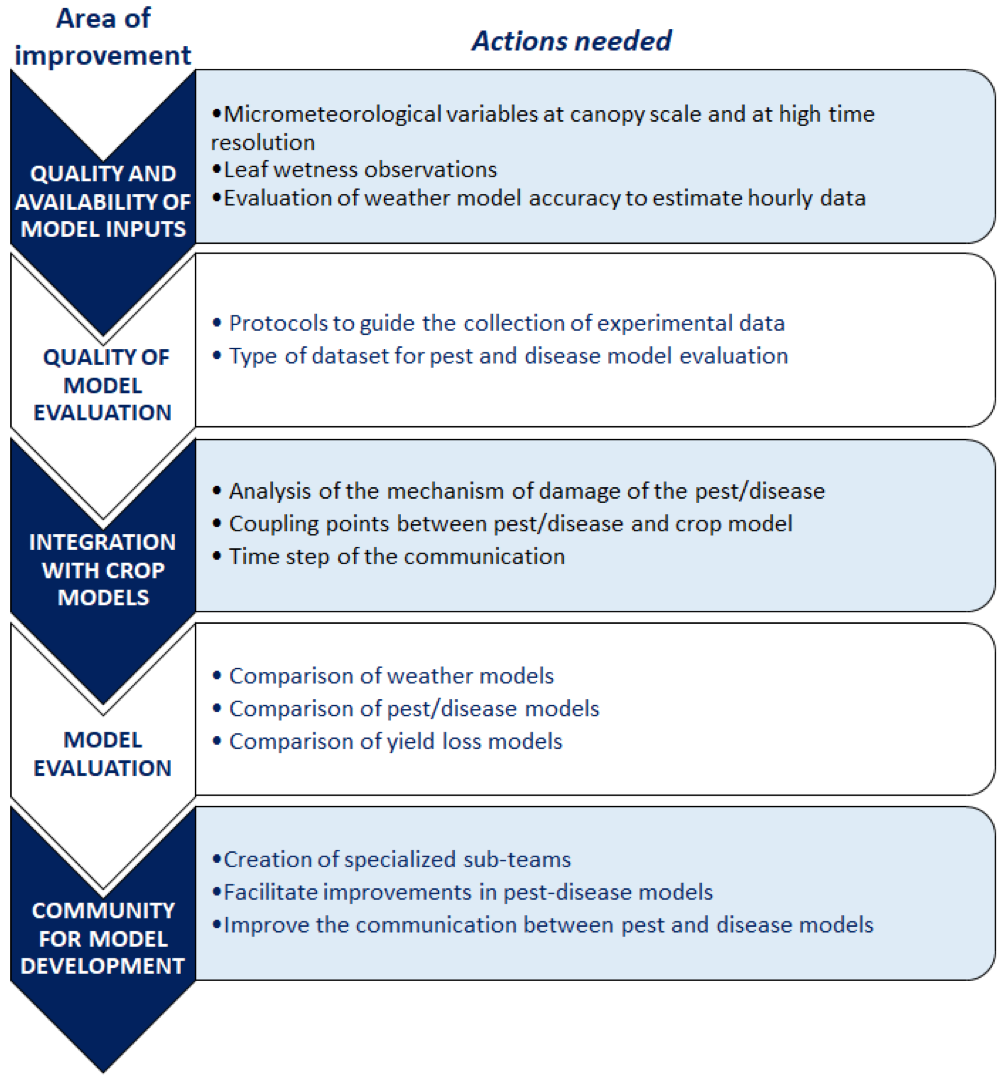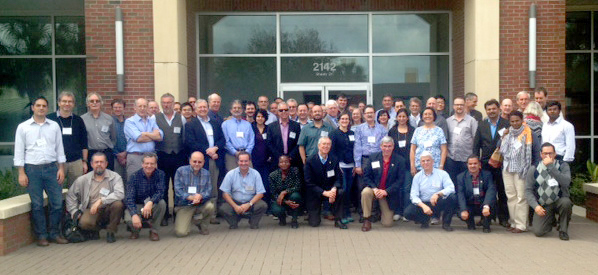Pests and Diseases (PeDiMIP)
Main Contacts for Initiative
Simone Bregaglio, Marcello Donatelli, Roger Magarey, and Serge Savary
Brief Description of Activity
The Pest And Disease Model IntercomparisonAnd Improvement Project’s (PeDiMIP) mission is to improve agricultural models for pests and diseases (PDM), and to enhance the scientific and technological capabilities for assessing impacts of climate variability and change and other driving forces on agriculture. Our goal is to create a next generation knowledge platform for agricultural pest and disease modeling.
Overview of Participants
Open initiative gathering scientists with a specific interest in the development and application of simulation models of agricultural pests and diseases, and their coupling with crop models.
Currents Research Focus
Four objectives: 1) improve PDM and their linkages to crop models; 2) improve the techniques used for the comparison and evaluation of PDM; 3) Develop theoretical/modelling frameworks to analyze crop health in agricultural systems; 4) Create education/training materials for PD modeling.

Recent Noteworthy Finding
We drew a roadmap to improve the simulation of the impacts of plant PD, fostering ìanew community of PD modelers. We developed a framework to assess PD impacts on food security, proposing a modelling approach to address the functioning of food systems exposed to biotic risks. Progress is being made with wheat modellers, KCKersebaumand SAsseng
Recent Papers/Reports
Donatelliet al (2017) Agricultural Systems. 155:213-224
Savaryet al. (2017) Crop health and its global impacts on the components of food security. Food Security. 9:311-327 Global Crop Loss Conference (Paris-16-18 Oct2017): Report in Preparation
Prior Updates

Pest and Disease Workshop Participants, Gainesville, Florida February 23-25, 2015
Main Contacts for Initiative
Roger Magarey, North Carolina State University, USA
Marcello Donatelli, CREA, The Council for Agricultural Research and Analysis for Agricultural Economics, Italy
Serge Savary, French National Institute for Agricultural Research, France
Simone Bregaglio, CREA, The Council for Agricultural Research and Analysis for Agricultural Economics, Italy
Pest and Disease Workshop
By Jenna Famular
Changes in climate and extreme events could have significant effects on agricultural pest and disease distribution and magnitudes and on the distribution of host species. In response to the need to include modeling of pests and disease in agricultural assessments, the Agricultural Model Intercomparison and Improvement Project (AgMIP) held a workshop in Gainesville, Florida February 23-25, 2015 with over 70 attendees.
Food production must be increased in order to meet the needs of a growing population, projected to increase to over 9 billion by the year 2050. As 2050 approaches climate is also changing, creating higher temperatures over most of the globe and likely increasing heat waves and drought in some areas and excess rainfall and flooding in others.
These changes could have major impacts on food security, yet none of the major assessments of climate change on food security have directly included pest and disease effects. Models are used for such impact assessments, but it is difficult to accurately model the effects of climate change on insects and pathogens and the associated crop productivity losses.
The workshop convened with the goal of advancing insect and disease modeling for use in regional and global assessments of crop production, climate change, and food security through initiation of model intercomparison and improvement teams. The workshop featured both keynote speakers and breakout sessions. The keynote speakers summarized their understanding of the current status of modeling pests and diseases of crops, approaches for using those models with crop and economic models for estimating losses in productivity and impacts on economic conditions. In addition, the keynote speakers highlighted example studies on impacts of climate change on crop production and economics at different scales.
Keynote speakers addressed specific topics, including modeling insect populations and their damage to crops at different levels of complexity, focusing on models used in assessments at regional to global scales, modeling plant pathogens and disease outbreaks along with impacts on cropping systems at regional to global scales and different levels of complexity, modeling cropping systems with capabilities to estimate effects of damage by pests and diseases, methods for linking models of insect pests and diseases with crop models to predict yield loss, designing and implementing model intercomparisons for crop insect pests and diseases, and economic model-based assessments of insect and disease impacts on food and economic conditions at different scales.
Breakout sessions included discipline perspectives on pest and disease models needed for integrated assessments and developing target roadmaps for AgMIP and pest and disease modeling teams. The discipline perspectives breakout created preliminary plans to form one or more AgMIP pest and disease modeling and intercomparison project teams with specific insect, disease, crop, economic, and climate researchers who are interested in contributing to the studies. The roadmaps breakout session developed concrete plans for moving forward with several new AgMIP teams working on pest and disease modeling.
For more information about the workshop please click here.
